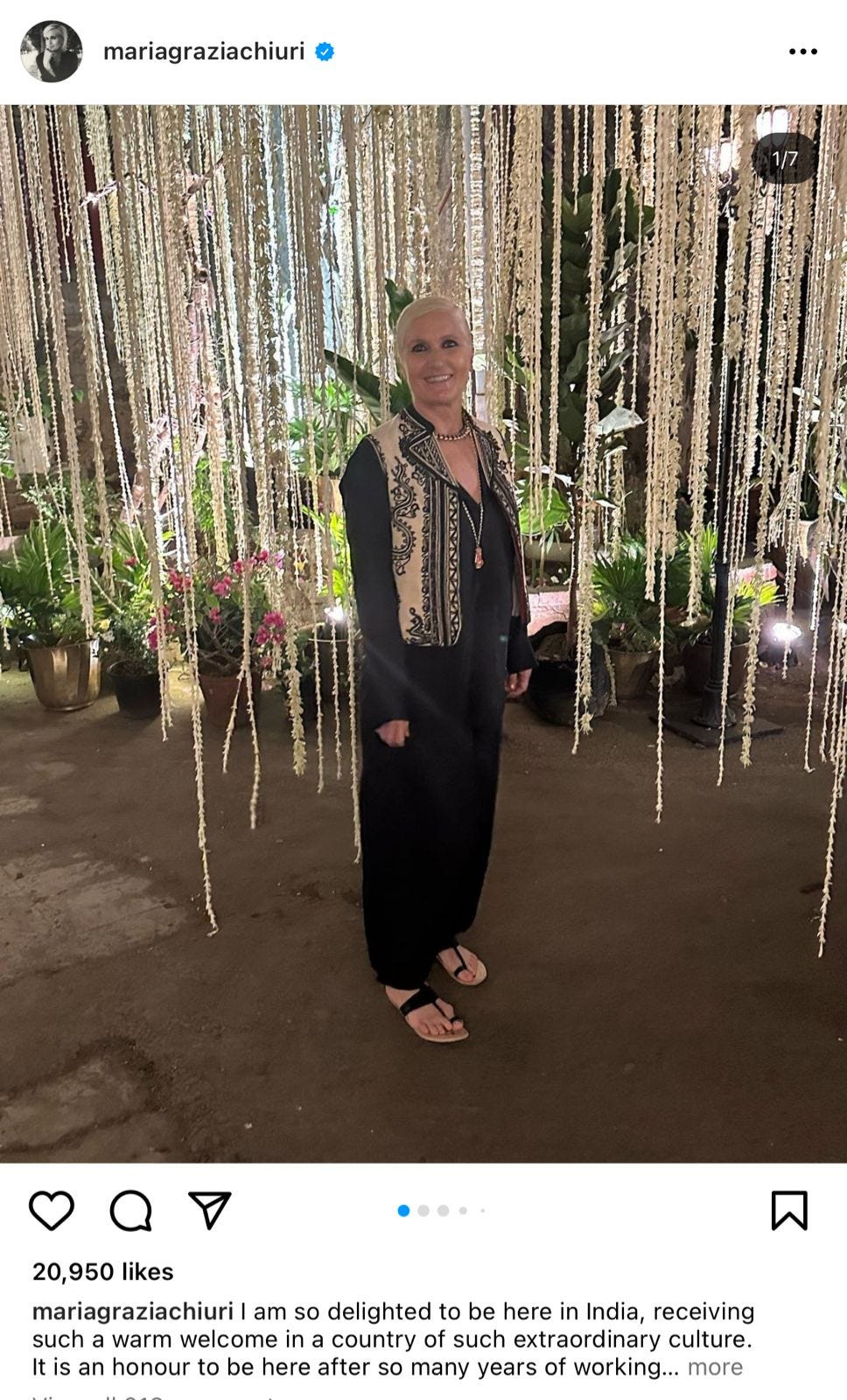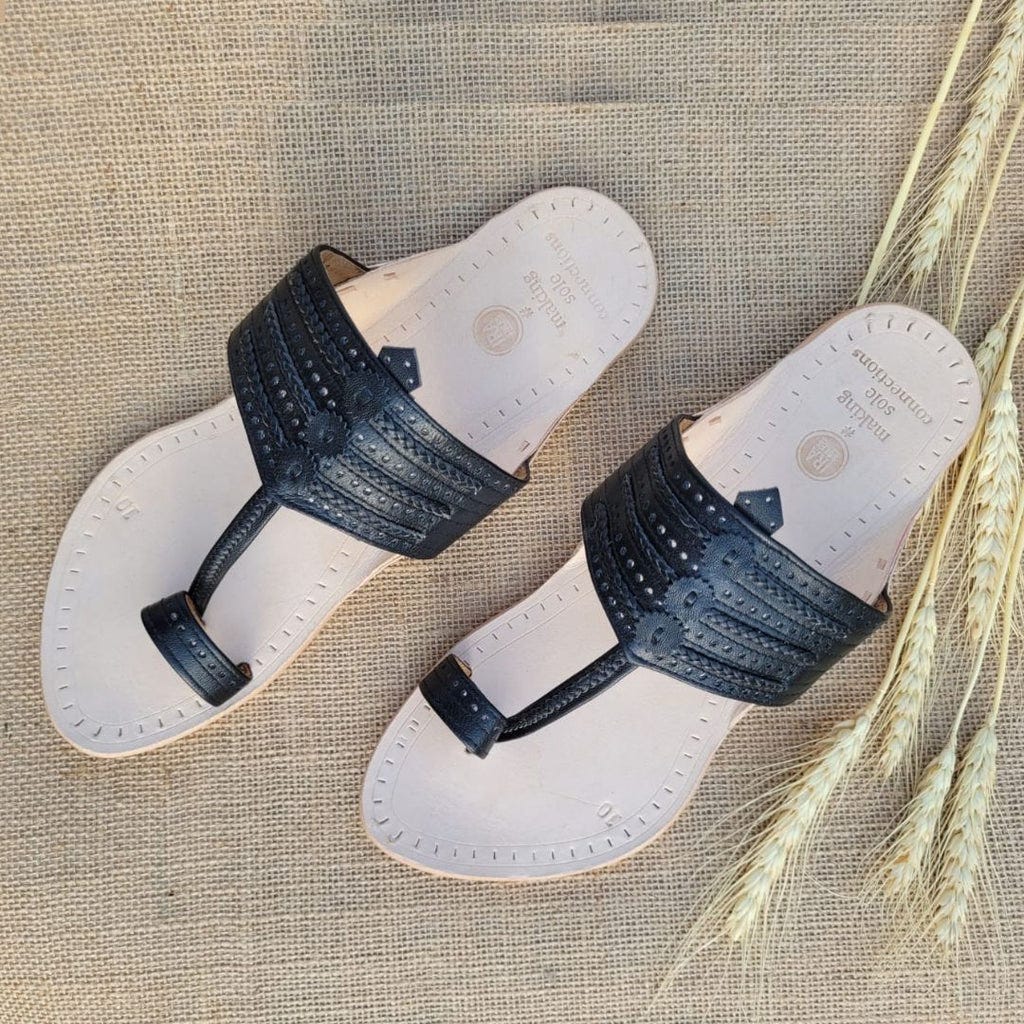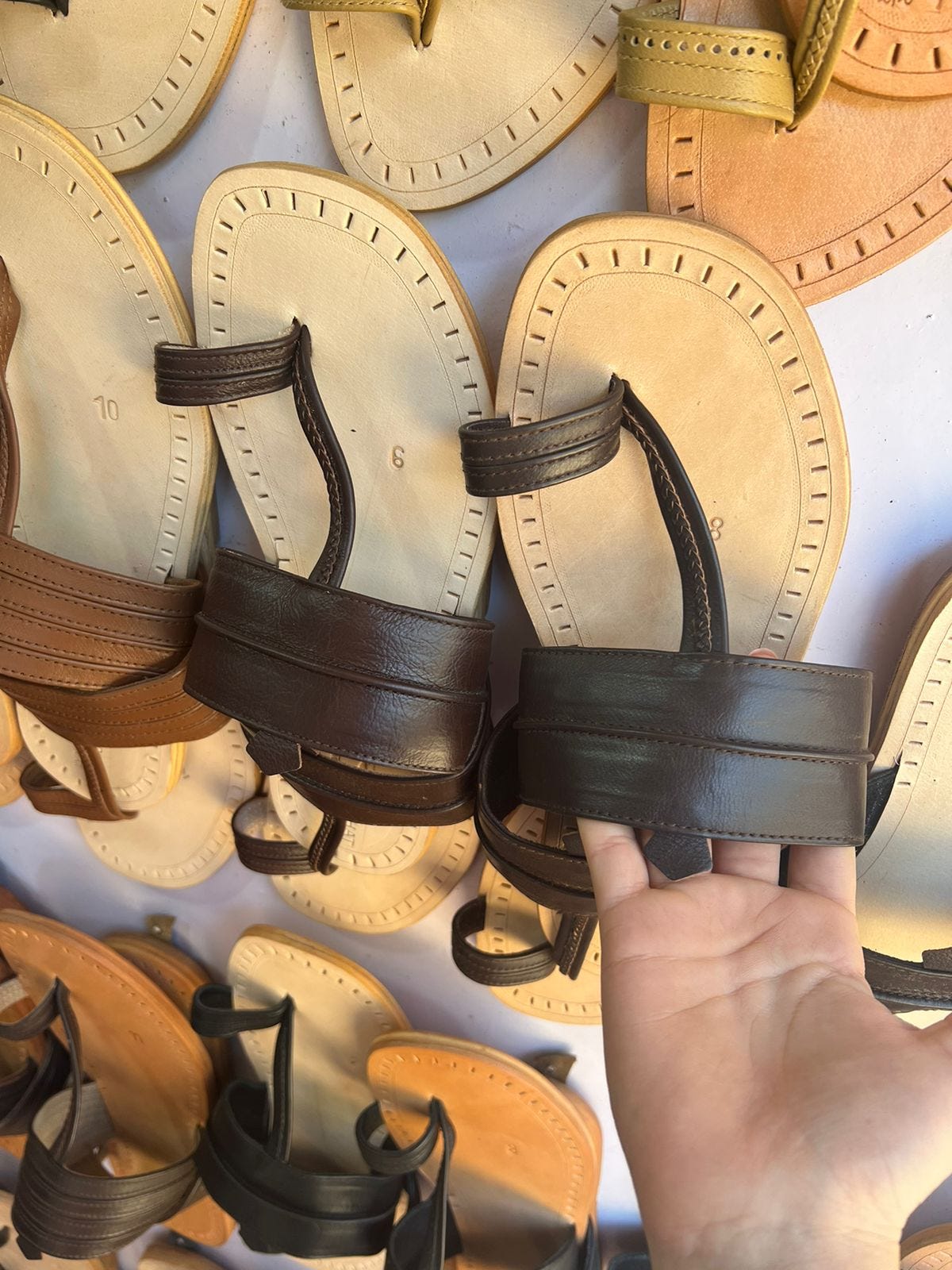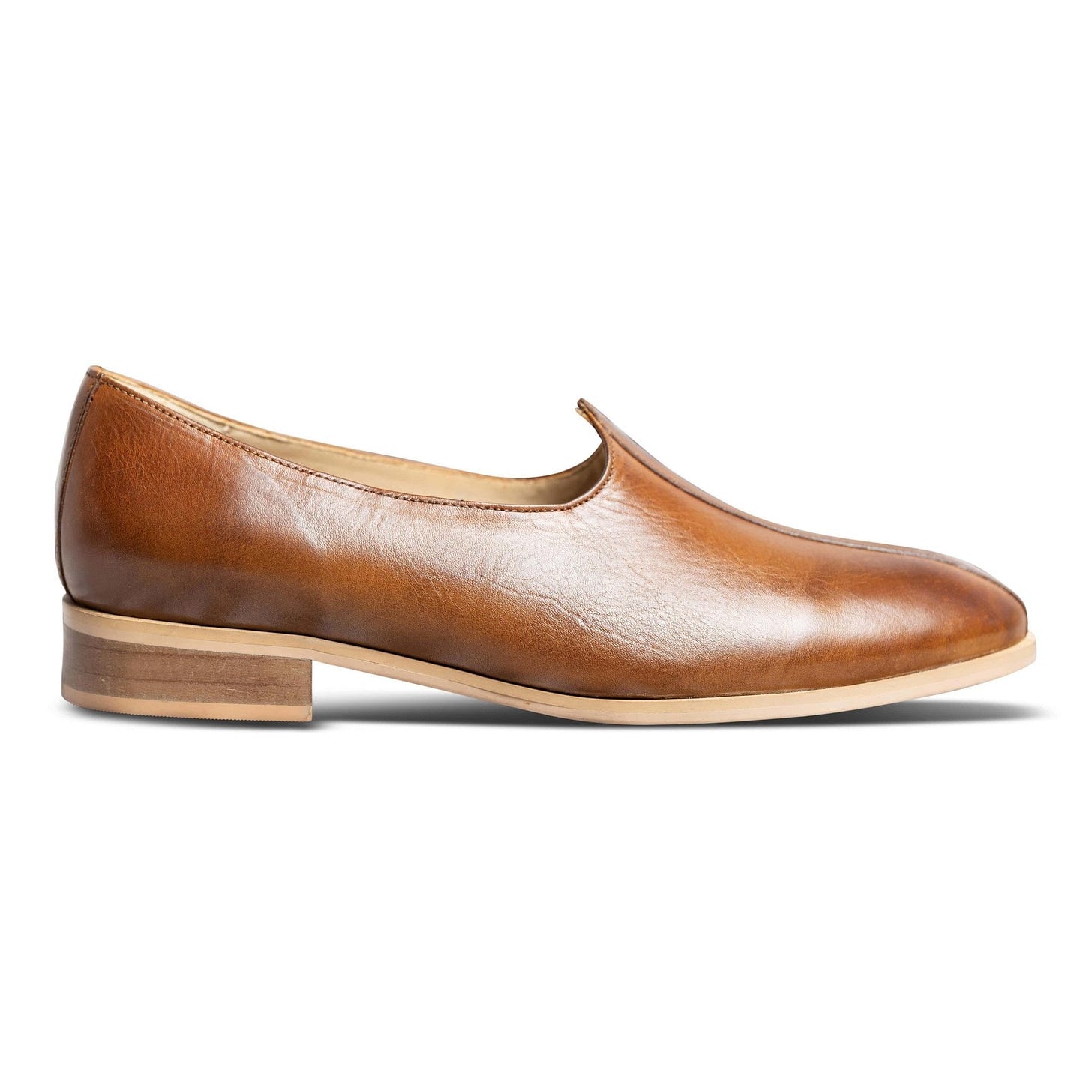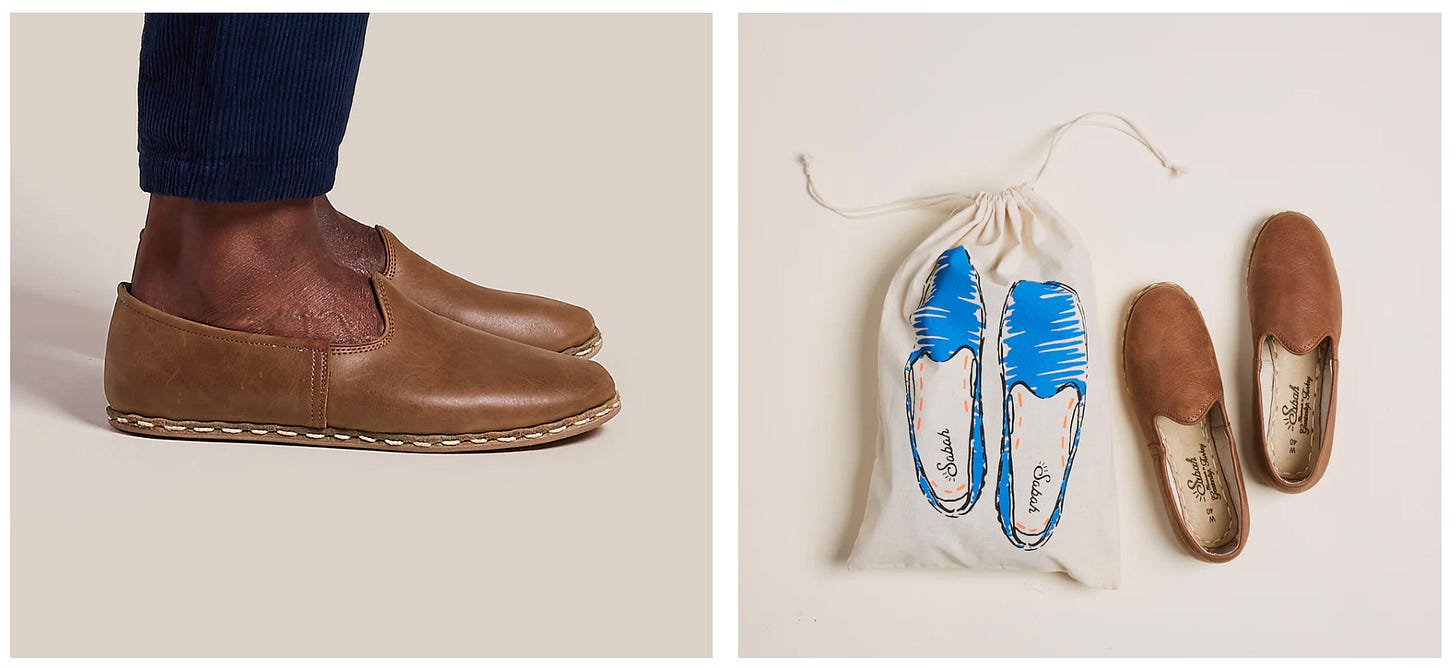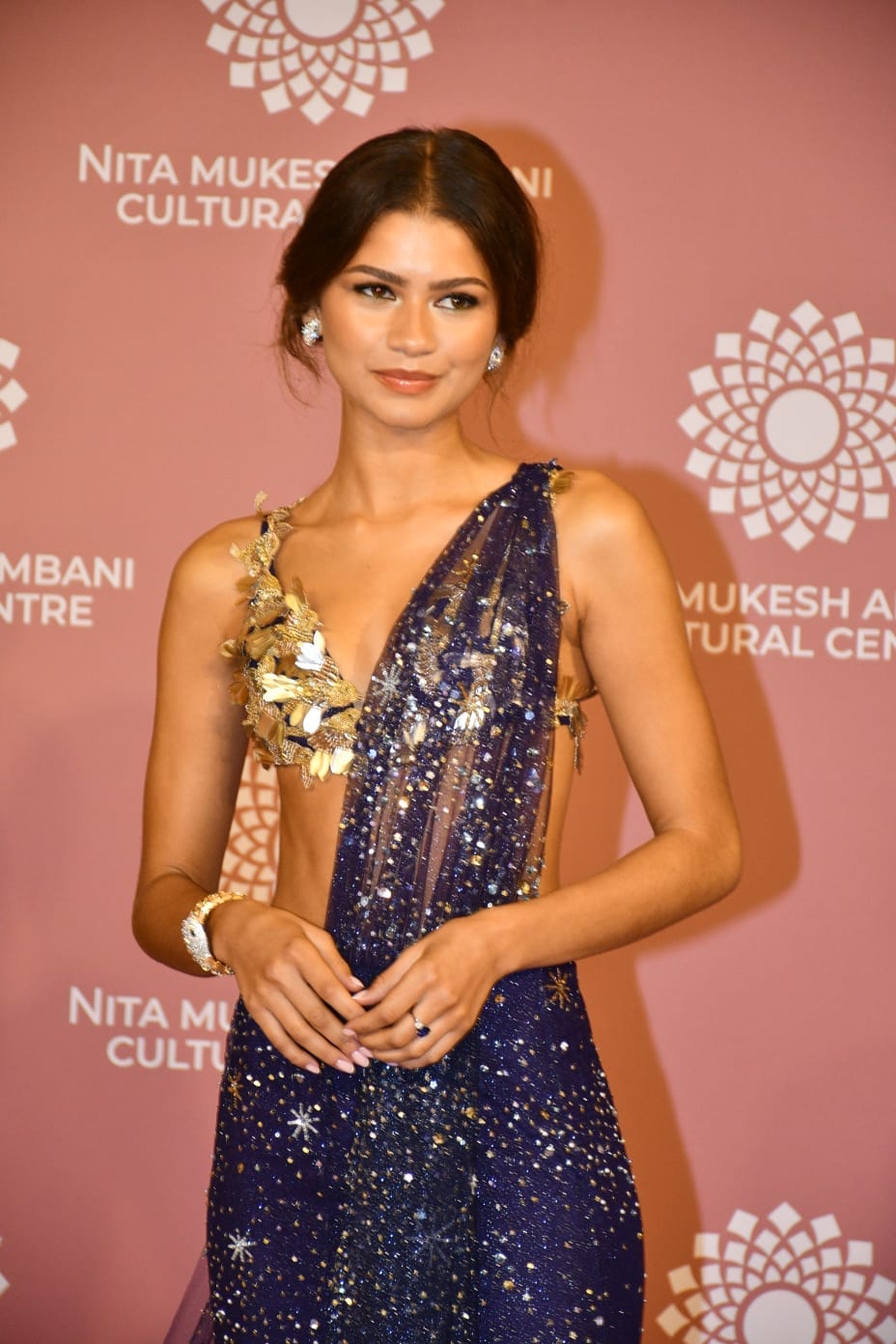Exploring ideas #3 - Kolhas: Exporting Indian fashion and culture to the world
There's no time like the present i.e. when social media is filled with pictures of Zendaya in a saree
I’ve now been back in India for nearly four years. I grew up here, went to college in the US from 2010 to 2014, and then worked in New York for almost six years, making it nearly ten away in total. A lot of my closest friends are still there and I end up going back often - for weddings, reunions, or just to see people and reconnect.
One thing that’s happened since I’ve moved back is my style has gotten noticeably more ‘modern Indian’. I wear Kolhapuris instead of sandals, Mojaris instead of loafers or sneakers, Nehru-collared shirts instead of regular ones, and a Bandi instead of a suit or blazer. And that’s not just when I’m here. I take that style with me whenever I go back abroad too, and friends always ask where I get my clothes or footwear from.
Nicobar’s Nehru shirts have been the most popular amongst friends. In fact, I now have a standing order to carry at least ten in different colors with me every time I head back stateside, just for them. My Kolhapuris have been in demand too. When I wore them to a group trip last July, one of my friends liked them so much that he stole the pair. A couple of weeks later, he texted me asking if I could source five more pairs for him because his friends wanted them too.
Sure, these are just a handful of incidents that may not speak to the broader market, but they’ve always made me wonder if there’s business to be built selling (slightly Westernized) Indian footwear and apparel in the West. This idea has popped to the top of my ‘Problems and ideas’ note several times over the past couple of years, but I’ve never really had the conviction to explore it on more detail.
Then, this weekend, my girlfriend sent me photos of the creative director of Christian Dior rocking Kolhapuris while in India for the brand’s landmark show at the Gateway of India in Mumbai this weekend.
I think it’s time to see if there’s something to do here.
Idea #3 - Kolhas: Exporting Indian fashion and culture to the world
Company purpose:
To bring Indian footwear, apparel, and style to the world.
Problem:
I don’t see this as a traditional startup problem, in the sense that I don’t imagine folks in the US wake up every day wishing for easy access to Indian D2C fashion brands. Like many other consumer products, this is going to be a ‘push’ idea. Nevertheless, I think the timing is suitable for a product or brand like this, which I'll explain in the 'Why Now' section.
Solution:
Kolhas: a D2C brand that sources Indian footwear and apparel - starting with Kolhapuris, Mojaris, and Nehru-collared shirts - to sell locally in the US.
Let’s look at each of the products in more detail and discuss how we might adjust them for Western tastes. The idea is to appeal to a broader US audience and avoid being perceived as a niche brand catering only to Indian consumers abroad.
If done right, I believe Kolhapuris could be an alternative to Tory Burch and Kate Spade sandals for women and Birkenstocks more generally, Mojaris could replace Del Toro or Stubbs and Wootton slippers, and Nehru shirts could replace regular button-downs for everyday casual wear.
Kolhapuris:
Kolhapuris are a style of handmade leather sandals that originated from Kolhapur, a city in the state of Maharashtra in India. They are typically made with vegetable-tanned leather and feature a T-shaped strap with two or three interwoven leather cords.
The trick here will be finding a balance between preserving the originality and unique Indian-ness of the sandals, while making palatable for US customers for everyday use. Below are pictures of three broad categories of possible designs:
A modern take by Fabindia, an Indian fashion and lifestyle conglomerate
The most classic take by Ira Soles, an Indian D2C brand
Something in the middle by a local producer in Mahabaleshwar, a hill station close to Mumbai
We’d have to experiment, but my gut says women would like the most classic design, whereas men would gravitate towards the middle - a mix between classic and modern. I believe Fabindia’s design loses too much of its Indian-ness and is impossible to differentiate from any other high-end leather sandal.
Mojaris:
A Mojari, also known as a Jutti, is a type of traditional handmade footwear that is commonly worn in India, particularly in the northern regions. It is made of leather and is typically embroidered or embellished with intricate designs and patterns.
Although modern Indian Mojaris, such as the ones pictured below, have eliminated the embroidery and patterns, they may be too aggressive for the US market. When I wore mine abroad, friends were intrigued, but more for their cultural appeal than their fashion potential. The heels are too high, and the toes and tongues are too pointed, resembling Aladdin slippers more than dinner loafers.
A New York-based company called Sabah, offers a great example of one possible direction we could take. They’ve taken a traditional, artisan-crafted Turkish slipper, modernized it, used top-quality leather, and transformed it into a loafer that’s just as wearable with shorts in the summer as it is with a blazer and jeans for dinner.
Nehru-collared shirts:
A Nehru or Mandarin collar, is a short unfolded stand-up collar style on a shirt or jacket. The style was popularized here by Jawaharlal Nehru, India’s first Prime Minister, who wore it frequently during his term.
I don’t think anything needs to be changed with these. I’ve seen the demand for Nicobar’s classic, well crafted, linen shirts first-hand amongst friends. Several brands including Uniqlo, H&M, and Zara have started experimenting with these shirts in the US already.
I’d start with the basics - white, navy, pink, and light blue solids - and then expand into more colorful patterns with limited edition drops.
Why Now:
Over the past decade, India has slowly but surely been reclaiming it’s rightful place as a global leader across economic and geopolitical spheres:
India overtook the UK to become the 5th largest economy in the world in 2022
The Indian market is becoming one of the most popular destinations for private capital in the world - ranking 4th for venture capital investments globally in 2022 and 3rd in 2021
India, which has always been a large exporter of software services, is now emerging as THE technology and services hub of the world
India is also becoming a top geopolitical player, delicately balancing its relationships with both the US and Russia in its bid to keep China at bay
However, the biggest change that we have seen specifically over the past two years is India’s emergence on the global cultural stage:
‘Naatu Naatu’, a song from the movie ‘RRR’, won the Academy Award for Best Original Song, while ‘The Elephant Whisperers’ won the Best Documentary Short this year
Indian movie stars are going global - Deepika Padukone is now the face of both Cartier and Louis Vuitton globally, while Priyanka Chopra, in addition to being the global ambassador of Bulgari, has also established herself as a Hollywood star
The Nita Mukesh Ambani Cultural Center, a venue to showcase and celebrate Indian art, hosted a launch party last weekend that drew both Indian and global stars - including Gigi Hadid, Tom Holland, Zendaya, Penelope Cruz, and Javier Bardem - and is being dubbed India’s Met Gala
All this is to say we are on the map. Our fashion, culture, and art is on the map. And I believe there is room today to build a clothing and footwear brand from India for the world.
Market potential:
Target Users:
Our target market comprises of millennials aged 25-40 in the top 20 metro cities in the US, with a particular focus on coastal cities.
Currently, our product mix is predominantly tailored to men, with Mojaris and Nehru-collared shirts designed for men, and Kolhapuris, while suitable for both genders, expected to be more popular among women.
Determining which segment to target and which product to launch first are closely related questions that require careful consideration before launching.
TAM:
The US apparel market is massive, at $380b a year, but that’s almost a pointless number to discuss. Even if we narrowed it down to our target group of millennials between 25-40 in top 20 US metros the US market is deep enough to build a scalable consumer apparel business. The problem is that with that depth, comes an extremely crowded market of effectively infinite consumer brands. The more important questions to ask, therefore, are:
Does the demand for Indian footwear and apparel really exist at scale in the US?
Is it possible to build a brand that is able to truly standout in the sea of existing ones, and convince consumers that they ‘need’ these products?
Competition/alternatives:
Let’s talk a look at the competition across products:
Kolhapuris - we’d compete with the general sandal category here. Kate Spade, Jack Rogers, and Tory Burch for women, and brands like Birkenstock more generally
Mojaris - because these would be a replacement for loafers, we’d compete with brands like Del Toro and Stubbs and Wootton, more directly with Sabah, and generally against companies making men’s loafers and drivers in the $150-$300 range
Nehrus - Indian co’s like Anita Dongre and The Bombay Shirt Company already have a presence in the US, with physical stores in New York. The former is focused more on formalwear, however, and the latter has expanded outside of just Nehru-collared shirts into a regular shirt and clothing brand. As I mentioned earlier, Uniqlo and H&M have also started selling shirts of this style in the US
More broadly however, in consumer footwear and apparel, you are competing with every other brand out there for consumers’ limited attention spans and wallets. Getting a share of both will be the trickiest problem to solve.
Business model:
Here are some back of the envelope economics, using crudely informed assumptions:
I’ve assumed that the average basket would be around $125: Kolhas and Nehru shirts priced at $100 each, Mojaris at $200.
The economics aren’t great on their own and don’t include actual operating costs of the business like salaries and rent. This shows that:
You’d have to depend on multiple purchases in a basket or
Drive repeat purchases within a year
You’d have to optimize for US shipping and logistics materially
And focus on driving down CAC
All to make the business viable. Have to do some deep work to understand how much room there is in each of those levers.
Vision:
There are two phases to this business as far as I see it:
Phase 1 - building the India to US apparel and footwear co
Phase 2 - expanding that vision
Phase 1 is simple enough. Start with a single product and target segment (sandals), build a foothold, and eventually start adding more products (loafers, apparel).
Phase 2 then becomes a fork where you can go one of three ways:
Fork 1:
Expand from selling just in the US to selling in Europe, then in the rest of the world
See if you can replicate this model with other source countries. For example, what styles are unique to say South Korea, that could have global appeal
Eventually become the brand and platform where people can find globalized local footwear, apparel, and style
Fork 2:
Replicate the model for other Indian consumer brands that want to go US and global. Indian companies, especially in consumer discretionary, often face a TAM ceiling when selling locally. In fact, there are only 46 lifestyle brands in India that did more than INR 500cr ($62.5m) in revenue in ‘22. However, going ‘global’ involves a lot of challenges - understanding a new market and consumer, setting up a local entity, understand export/duty, dealing with cross-border remittance
Once we setup our own co successfully, we would be in a good position to help others go global as well, becoming an India-to-US infrastructure company for D2C brands (and eventually India-to-ROW)
Fork 3:
Once we have built our standing as an India-to-US consumer brand, we can expand our offering into categories outside of just clothing and apparel
Some (admittedly basic and not-well-thought) products produced in India with global appeal include:
Ayurvedic supplements and nutraceuticals
High-end packaged spices and seasonings
Indian skin care
Eventually, like in Fork 1, we could replicate this models for other source countries, becoming the platform where you can find ‘locally’ sourced goods anywhere in the world. A company called ‘Try The World’ (talk about great domain + SEO) is doing exactly that for food
Conclusion:
There is much talk in India about "Make in India, Make for World”. So far we have seen success in software, services, and SaaS, but we are still behind when it comes to consumer goods. I think the time is ripe - with the current mix of quality talent, manufacturing capability, and global awareness - to export Indian fashion, lifestyle, and culture to the world.
Thank you, but what do I do with this information?
Are you someone that’s interested in D2C and what to chat about this in more detail?
Have I made some completely incorrect assumptions?
Are you already building this?
Would love to hear from you.
If somebody you know might enjoy this, share it with them:
If you enjoy reading about a wide variety of topics at irregular intervals subscribe here:

